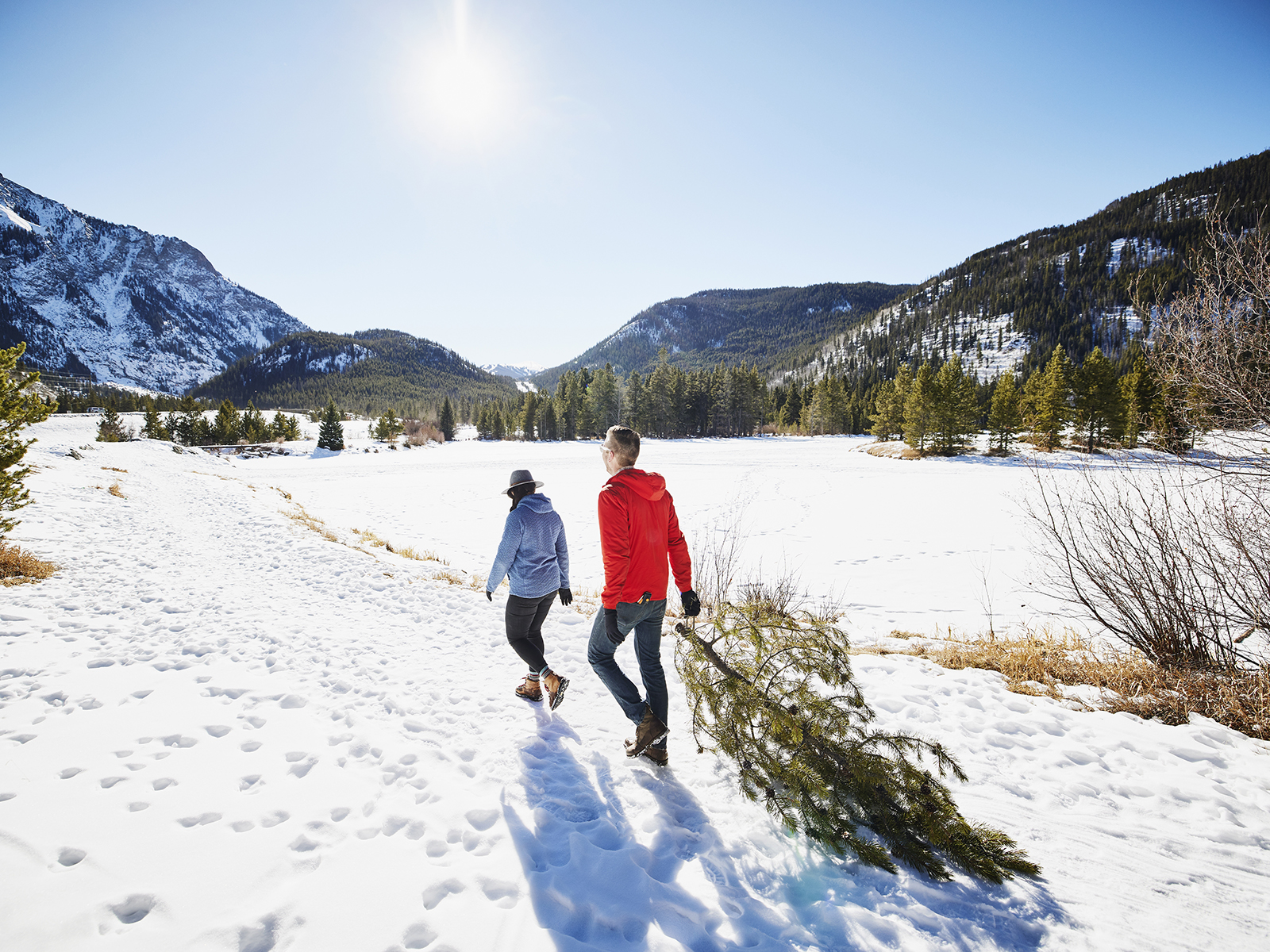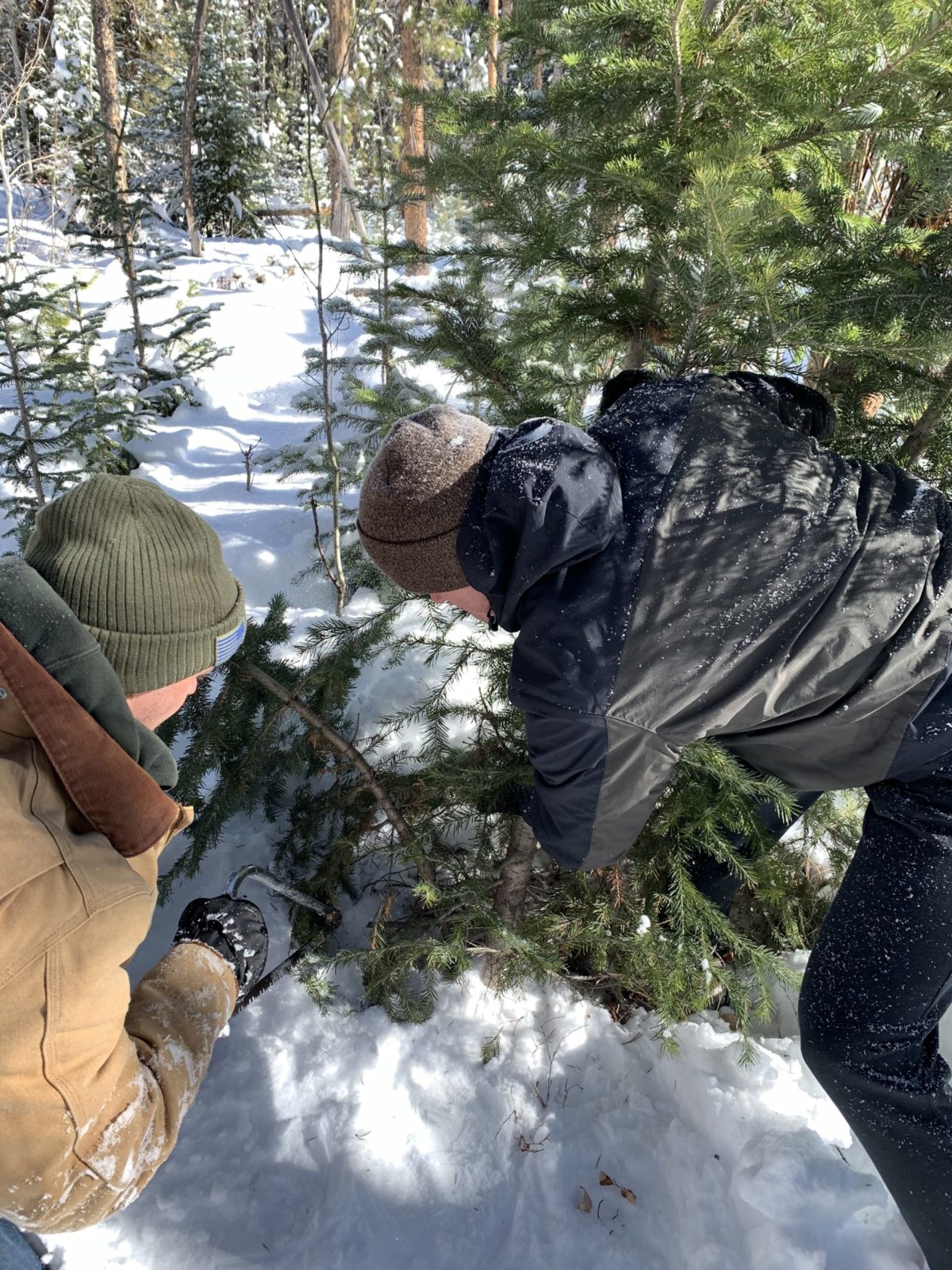The Local newsletter is your free, daily guide to life in Colorado. For locals, by locals.
There’s no such thing as a perfect Christmas tree. But somewhere between a scruffy Charlie Brown twig and the majesty of Rockefeller Center is the right Christmas tree. Forgo pricey farms and faraway national forests this year, and instead take advantage of a little-known program that allows you to chop down a Tannenbaum close to home.
Andrew Perri, Denver Mountain Parks’ manager of forestry and natural resources, let us in on the holiday hack.
How To (Legally) Cut Down a Christmas Tree Close to Denver
1. Secure your seasonal showpiece (and do your part to reduce wildfire risk) when you apply for one of 250 free permits to harvest a tree in a forest near Evergreen via Denver Parks & Recreation’s Denver Mountain Parks division. Email denvermountainparks@denvergov.org between Black Friday (November 28) and December 21.
2. The cutting area is located off a paved road, so four-wheel drive isn’t required, but you’ll want to wear snow boots and gloves. Pack a bow or pruning hand saw, rope, and a blanket or tarp to prevent the wind from stripping your tree’s lovely branches on the ride home.
3. Opt for a conifer with a trunk no larger than six inches in diameter. Firs tend to have the flimsiest limbs, which may not support your vintage ornament collection. Perri’s go-to greenery? Our state tree, the blue spruce. “They are a bit pokey, but that helps keep the kids away from the presents,” he says.
4. You’ll want to give the star atop your tree plenty of room to shine, so select a height that leaves about one foot between the crown of the conifer and your ceiling. Cut as close to the ground as possible.
5. Wrap and hoist your piney prize atop your car and tie it down at two points—one at the base and one near the top—with the bottom of the tree toward the front to reduce wind resistance. Before you bring it inside, make one last cut at the base, then fully submerge it in a stand filled with one to two inches of fresh water.
5 More Places in Colorado Where You Can Cut Down a Christmas Tree

South Platte Ranger District, Pike National Forest
- Where: Clear Creek, Douglas, Park, Jefferson, and Teller counties
- When: November 28 to December 18, 2025
- Permits: recreation.gov
- Cost: $20 each, with a limit of five trees per household
- Tips: This location is popular due to its proximity to the Denver metro area. Because of this, you must pick a specific cutting day and area when purchasing this permit. Park rangers also recommend going between 8:30 a.m. to 2:30 p.m. to avoid getting stuck in the dark.
White River National Forest
- Where: Eagle, Garfield, Gunnison, Mesa, Moffat, Pitkin, Rio Blanco, Summit, and Routt counties
- When: November 16 to December 31, 2025
- Permits: recreation.gov
- Cost: $10 each, with a limit of five trees per household
- Tips: To experience fewer crowds—and help with forest management in this area—travel to Dillon Ranger District. Park rangers warn to only cut trees with a trunk size of six inches or less in diameter, and to never top a large tree.
Sulphur Ranger District, Arapaho and Roosevelt National Forests
- Where: Grand County
- When: November 8 to January 7, 2025
- Permits: recreation.gov
- Cost: $20 each, with a limit of five trees per household
- Tips: The Elk Creek cutting area will not be plowed or staffed this year, meaning drive-in access won’t be available. If you want to cut your tree from here, plan to walk.
Canyon Lakes District, Arapaho and Roosevelt National Forests
- Where: Larimer County
- When: November 22 to January 7, 2025
- Permits: recreation.gov
- Cost: $20 each, with a limit of five trees per household
- Tips: Park rangers suggest looking in Joe Wright Reservoir, off Highway 14 near Cameron Pass and Manhattan Road (County Road 69), south of Red Feather Lakes.
Bureau of Land Management
- Where: Craig, Grand Junction, Silverton, and all over
- When: Dates vary by region.
- Permits: Bureau of Land Management field offices
- Cost: $6–$10 each, depending on region
- Tips: When purchasing your permit from a BLM office, ask about specific cutting area guidelines, as restrictions vary by region.
What To Bring To Cut Down a Christmas Tree in Colorado

- Handsaw (the Forest Service doesn’t allow chainsaws)
- Rope (to secure to tree to your vehicle)
- Tape measure (to measure the diameter of the base)
- Tarp (to help lug the tree to your car, and to protect your vehicle from scratchy needles)
- The 10 Essentials









